- Home
- Keith Douglass
Joint Operations c-16 Page 2
Joint Operations c-16 Read online
Page 2
Slightly to the east, two F-14D Tomcats were orbiting, waiting for their turn at the airborne tanker. An F-18 Hornet was snugged up to the KS-3, sucking down a few thousand pounds of fuel before making its first run-in on the deck. Its wingman was already clear of the tanker’s path and headed for the starboard marshal pattern.
“What?” the watch officer asked again, bewildered.
Instead of answering, Bam-Bam ran his screen cursor out and let it rest lightly on a symbol that represented a Chinese merchant ship. He right-clicked, and a host of track information and data on the vessel sprang up on both the main tactical display and on the small data screen to his left.
“This is too weird,” Bam-Bam muttered. His hand snaked out and came to rest on the white telephone centered in the console between the TAO and the watch officer. “I don’t like this one bit.”
The watch officer slid back slightly in his seat and craned his neck to look at the other man’s data screen. Course, speed, last visual identification, final destination, origination port, all were displayed in an orderly fashion. The merchant had been overflown daily by both shore-based P-3C assets as well as the carrier’s own aircraft, rigged repeatedly, and photos were available in the carrier’s intelligence center, or CVIC, showing every detail of the ship’s superstructure.
“She’s making fifteen knots — correction, eighteen knots,” Bam-Bam said as he watched the speed leader protruding out from the merchant ship grow slightly longer. “Every other time we’ve seen her, she’s been at ten knots.”
“Some liberty turns,” the watch officer suggested, referring to the classic Navy maneuver of pouring on a few extra revolutions per minute above ordered speed when nearing home port. “Just ready to get in and dump that cargo, probably.”
“Maybe. But maybe not. Crap,” Bam-Bam said, and closed his fingers around the telephone. He continued swearing quietly as he punched in the number for the Flag Mess. His voice skidded to a halt suddenly. “Admiral, this is the TAO. I hold Rising Sun at twenty knots, inbound on Pearl Harbor, and turning into the wind now, sir.” Bam-Bam listened for a moment, then nodded and said, “Aye-aye, Admiral.” He replaced the telephone and snapped, “Get two more S-3’s in the air now. Harpoons. Tell the handler and the air boss the admiral wants a new ship record set.”
Questions crowded the watch officer’s mind, but he was too busy complying with the TAO’s orders to ask them. Seconds after his first phone call, the 1MC general announcing system on the ship crackled into life. “Flight quarters, flight quarters. Now launch the Alert Thirty S- 3s.” The watch officer could hear feet pounding down the passageway, noises overhead as the crew sprang into action.
Finally, after a last phone call to the handler assured him that two Vikings were spotted on the deck and turning, the watch officer turned back to Bam-Bam to find Admiral Wayne standing immediately behind him. Both were staring with growing anger at the tactical display. The TAO turned to the watch officer. “General Quarters.”
The habit of obedience was too deeply ingrained for the watch officer to even ask his first question. His hand was closing on the alarm lever and sliding it into position even as the TAO finished speaking.
“There,” Admiral Wayne said, hard anger in his voice. “Christ, I hope we’re not too late.”
Then the watch officer saw it. He felt the blood drain out of his face as the meaning sunk in. “Dear God,” he said, more of a prayer than an oath.
The merchant ship was at twenty-five knots now, but the truly horrifying details weren’t on the tactical display. Instead, they were on the small television screen mounted high in the left corner of the room. It served a variety of purposes, but at this moment it was relaying video back from the airborne Viking’s photo recon pod slung under its belly.
“Those bastards,” Admiral Wayne said. His face was a mask of cold fury. “This time they’ll learn a lesson.”
The rusty, bedraggled merchant looked as though it were caught in the middle of a tornado. Sheets of metal peeled back from its superstructure, cut ungainly arcs through the thick tropical air before shattering the smooth progression of swells into founts of white foam and water. Massive metal transport containers were incongruently fluttering in the wind as though they’d been robbed of every atom of structural integrity. Cargo cranes and handling gears slid smoothly to the sides of the ship, then sunk down out of sight as wide areas of deck peeled back to reveal elevators. The ancient metal tracks that served as a mini-railroad for the transport containers sunk down into the deck and diamond-glittering covers of nonskid snapped into place over them.
“Those are Harriers,” the admiral said wonderingly. “Not exactly — but something like it.” He reached for the Navy Red circuit handset located on the bulkhead next to him. “Sweet God, this can’t be.”
“A Trojan Horse,” the watch officer said, stunned. “It’s impossible.”
“It’s not only possible, it’s happening right now,” Bam-Bam snapped. “So get your head out of your ass and get me some aircraft in the air. I need Tomcats and Vikings loaded out with harpoons, torpedoes, anything they’ve got that will kill an aircraft carrier. Have the USW module get hold of the submarine on Gertrude — vector her in for the kill.” Bam-Bam himself was already feeding data to Admiral Wayne as he held a hurried conversation with the duty officer for Commander, Pacific Fleet.
The watch officer had the air boss on one line held up to his right ear, the handler on the phone at his left, and the airborne aircraft howling over tactical about the scene unfolding beneath them. He made his first command decision: He broke the Hornet off tanking and vectored him to bingo at Hickum along with the Tomcats. With as much air power as they were about to be launching, he had no time for taking onboard empty, winchester aircraft. The tanker reported in that he had enough fuel to stay airborne for another cycle, as well as enough in stores to support at least the first wave of fighters.
As they watched, a cloud of dust and fury rose up from the deck of the transformed aircraft carrier. Two of the Harriers, one on each end of the ship, shuddered, tilted in an ungainly fashion, then heaved themselves up into the air. As they fought off gravity, they started sliding forward, quickly gaining speed and altitude as they transitioned from take-off configuration into full flight mode.
“No, no,” Batman said, then toggled the mike to Navy Red on. He cleared his throat, then said, his voice husky, “CinCPac, this is Jefferson. Be advised that you have enemy aircraft inbound.” CinCPac’s reply was muffled by the noise inside TFCC, but everyone could see the horror on the admiral’s face. “Wings dirty, sir. From here, it looks like they’re carrying a full loadout of land attack missiles. I’ve got fighters inbound on them, but they’re in a bad tail chase.”
“The Air Force — ” the watch officer heard, then had to turn his attention back to the tasks at hand.
“If they’re not airborne now, they’ll be too late,” the TAO said quietly. “They’ll catch them on the ground, just like — ” he broke off, clearly unwilling to give voice to the words that were in everyone’s mind.
Just like last time.
“Those SEALs, sir — they’re still on the ground,” the watch officer said. “Do you want me to try to raise them?”
Admiral Wayne shook his head. “Stay focused on getting my airwing loaded out and in the air. If anybody’s got a chance out there, it’s Murdoch and his men. And as for knowing what’s going on — well, I think they’re about to find out. The hard way.”
TWO
In Port, Hawaii
0615 local (GMT –10)
Along the waterfront, the piers were crowded with ships making stopovers enroute deployments, ships returning from the Middle East, ships on Pineapple Cruises, the slang name for a cruise to Hawaii. Not all were combatants — each battle group traveled with at least one, and sometimes more, underway replenishment ships. While there’d been some propositions to tether the unrep ships to theaters and treat them as theater resources rather than
as part of a battle group, nothing substantive had changed yet in the way they deployed.
Onboard the combatants, in-port officers of the day were just now hearing the horrifying news being spread over the secure Navy Red battle circuit. For many of them, the first notice they had of trouble was air raid sirens groaning to life then lifting up their voices in an eerie wail. At first, most of them thought that it was a routine test of some sort, although a few older veterans immediately turned pale and raced to combat stations.
Each ship had no more than a third of its crew aboard, and in some cases, only one fifth of its crew. In theory, at least, each duty section held enough varieties of ratings and officers to get the ship under way in an emergency.
In theory. The reality was far harsher.
Still, to their credit, the majority of the officers of the day took only a few moments to understand what was happening. They immediately dispatched their operations specialists to Combat, hauled out the keys that would activate the automatic, self-contained close-in-weapons systems, and started bringing up the massive complex of computer systems and firing equipment that would enable them to launch anti-air missiles. Two ships, realizing that neither had sufficient personnel onboard to light off either one, transferred all their engineering personnel to one ship along with their operations specialists, leaving the damage-control ratings onboard.
For the most part, the ships were drawing shore power and their engineering plants were in standby. All were either gas turbine or diesel engine driven, steam plants having long given way to more efficient means of propulsion. The gas turbine ships required only five minutes to light off, while the diesels took slightly longer. Both types of engineers skipped at least eighty percent of the safety measures contained in their light-off instructions.
As the engineering plants came online, each ship was simultaneously lighting off combat systems, drawing on the shore power supplied by massive cables running from a main patch panel to the pier and commercial power. The electrical load quadrupled within the first two minutes, then doubled again. Within the base, the generators screamed in protest. One dumped offline, and the others followed shortly.
But the base power crew was just as motivated as the ships crews themselves. Pearl Harbor itself had no anti-air missiles, no Patriot batteries, no way of defending itself other than the power and might of the ships nestled up to her piers. The shore engineers slammed in battle shorts, ran their generators at 150 percent of rated capacity, and somehow managed to restore the vital flow of electrons to the ships. The break in power lasted only twenty seconds, but it was enough to trip all the ships’ combat systems offline. The light-off procedure had to be started all over.
Four minutes after the air raid siren shattered their world, the first ship, the fast frigate USS Louis B. Puller, pulled away from the pier. The lines were severed by axes by the boatswains mates when they realized that there was no one left on the pier to cast them off. The first fast frigate moved smartly away from the pier, twisting on her bow thrusters as she ran missiles out on her launch rails. Although more nimble than the larger cruisers and destroyers, the FFG carried a much shorter-range missile than the later weapons’ blocks on her larger sisters. Still, twenty-five miles of missile was enough to make a difference.
Lieutenant Brett Carter stood in the center of Puller’s Combat Direction Center, wondering if he’d just made the greatest mistake of his life. As the command duty officer, he certainly had the authority to get the ship under way in an emergency without the captain or the executive officer, but he was quite certain that neither of them had even conceived that it would be required.
He’d had only seconds to decide what to do as the news came blasting over the secure circuits, and in the first few moments the terrifying photos he’d seen of Pearl Harbor after the Japanese attack were all that he could think of. The Navy had learned the hard way that ships in port might as well be counted dead in the event of attack.
Carter had taken almost twenty seconds to make his decision, enough time to hear the first rumble of explosions and see fire on the horizon. Then in a calm voice that did not reflect the panic in his gut, the young lieutenant had gotten his ship under way, declared weapons free, designated the first hostile target, and authorized the launch. Even though his fingers trembled, he turned the key that energized the weapons-release circuits.
Looking behind the ship now, he could see smoke billowing up from the pier at which they’d been moored. He felt a flush of relief — whatever consequences he would face on his return to port, he knew in that second that he’d made the right decision. Had he waited for any of the ship’s senior officers or for permission from another source, his ship would right now be fighting fires onboard — or sinking — rather than powering up to launch weapons in anger.
His crew in Combat was inexperienced, aside from a senior weapons technician chief petty officer. Men and women were filling two positions each, and the bridge crew was similarly shorthanded. Yet even operating at a dead run with a pick-up crew composed only of the on-duty watch section, the officers and crew operated as they were trained to do. Six minutes after the air raid siren, the first missiles leaped off her rails headed for the air radar contact that the USS Jefferson had designated as hostile in the LINK.
The missile arced out across the bay, searching for the target designated by the computers, talking with the ship in a quick rattle of digital positions and vectors, corrected its course slightly and bore in on the lead aircraft. It was virtually a head-to-head shot, and the targeting required the utmost in precision. The young third-class petty officer who’d actually fired the missile from the ship had never done so alone, apart from a few training simulators. He watched his screen, saw his missile — his missile — acquire the target on its own seeker head and streak across the video terminal. His foot danced out a nervous rhythm on the deck, and he never even realized that it seemed much more like the video games he’d been playing just two nights ago than actual combat.
In the two minutes it’d taken to get the missile off the rails, the lieutenant OOD had had time to get scared. As luck would have it, he was the junior-most OOD among the ships in port, and already the more senior OOD’s were howling over tactical, each trying to clear his ship of the traffic and avoid a collision while still launching missiles. Fortunately for the FFG, she was well clear of the channel, and her OOD had made the wise decision to run like hell while firing and get the hell out of the way of the cruisers.
Commercial shipping and fishing vessels crowded the port and channels, and except for those who’d heard the air raid sirens, they were mostly unaware of what was happening. From their viewpoint, the Navy had simply gone insane, trying to get that many ships under way at once without warning the other natural denizens of the waterways that they were conducting some sort of drill. Most of the civilian masters were howling to the Coast Guard and Port Control authorities, demanding explanations, protesting the interference with their rights of way. By the time the first missile was launched, however, the Coast Guard, which monitored Navy Red, knew what was happening. The civilian ships were told to clear the channel. Immediately. Ground their vessels if necessary, but under no circumstances would the Navy yield the right of way to any other vessel.
Two Aegis cruisers were the next ones to work their way out of the pierside tangle, and they entered the main channel with missiles already gouting out of their decks. The vertical launch system, combined with a computer system capable of targeting almost three hundred enemy aircraft simultaneously, was the most potent anti-air system ever developed for a military service. Under normal circumstances, the two cruisers alone should have been able to eliminate every enemy aircraft onboard the disguised Chinese aircraft carrier.
Under normal circumstances.
Unfortunately, recent decisions within the Navy had put into place stringent protections to prevent U.S. Navy ships from firing on friendly units. These included certain geographic block-out areas that were p
rogrammed to not accept firing solutions within those geographic boundaries, as well as increased minimum firing ranges for the missiles each ship carried. By the time the cruisers rippled off the first wave of missiles, the Chinese aircraft were already within minimums. One missile rammed into an aircraft, but the others would not detonate.
Twenty-nine of the thirty Chinese jump jets survived. Another was picked off by the frigate. Twenty-eight arrived overhead in Pearl Harbor.
Chinese vessel Rising Sun
0620 local (GMT –10)
As soon as the last aircraft lifted off the deck, the Chinese carrier cut hard to the north, headed straight in for the coastline. Behind her, the amphibious assault vessel was launching its own contingent of aircraft, as well as a tanker. They remained overhead, loaded out with air-to-air missiles, as protection against the fighters from the aircraft carrier.
They need not have worried, at least not right away. The Jefferson’s assets were concentrated on the enemy aircraft heading for the coast. The battle group had seen the aircraft carrier empty her decks.
Well below the waterline, Chinese sonar technicians had heard the ghostly, drawn-out voices over Gertrude, and had managed to triangulate the transmissions from the submarine. A linguist was perched on a high stool next to the console, holding on to the metal desk beside him to keep from slipping across the steeply canted deck as the aircraft carrier turned. He listened to the transmissions, then quickly translated the words that came over the unclassified circuit.
The final firing solution was not particularly refined. The submarine knew the danger of using Gertrude, and had transmitted only the briefest acknowledgement of her new orders. Still, that blip of sound was enough to narrow down the sonarman’s search, and he selected the higher frequency active transmissions that would let him pinpoint the submarine’s location.

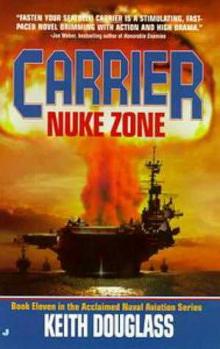 Nuke Zone c-11
Nuke Zone c-11 Seal Team Seven 6 - Battleground
Seal Team Seven 6 - Battleground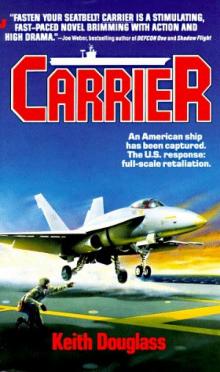 Carrier c-1
Carrier c-1 Island Warriors c-18
Island Warriors c-18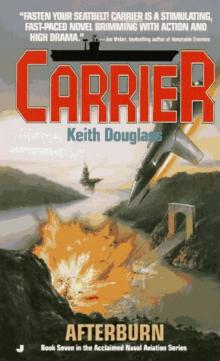 Afterburn c-7
Afterburn c-7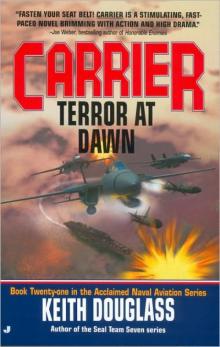 Terror At Dawn c-21
Terror At Dawn c-21 Specter sts-2
Specter sts-2 Joint Operations c-16
Joint Operations c-16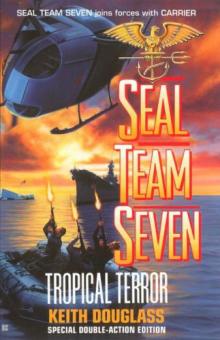 Tropical Terror sts-12
Tropical Terror sts-12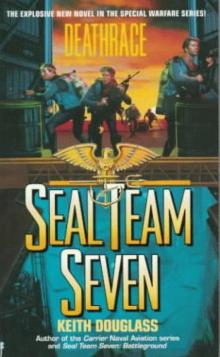 Seal Team Seven 7 - Deathrace
Seal Team Seven 7 - Deathrace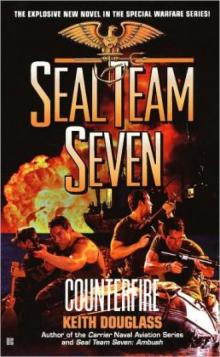 Counterfire sts-16
Counterfire sts-16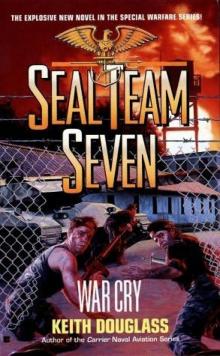 War Cry sts-9
War Cry sts-9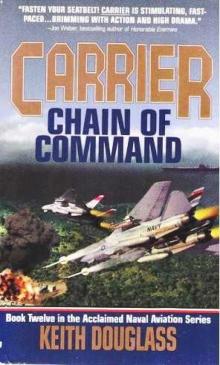 Chain of Command c-12
Chain of Command c-12 Brink of War c-13
Brink of War c-13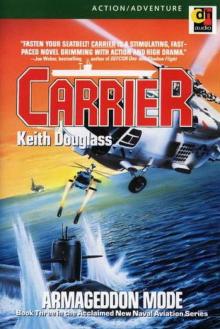 Armageddon Mode c-3
Armageddon Mode c-3 Arsenal c-10
Arsenal c-10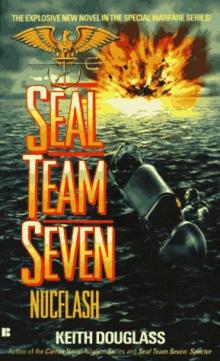 Nucflash sts-3
Nucflash sts-3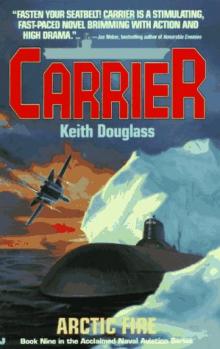 Arctic Fire c-9
Arctic Fire c-9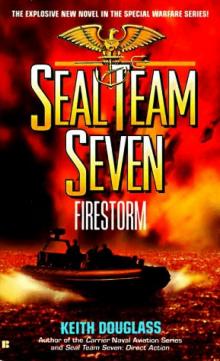 Firestorm sts-5
Firestorm sts-5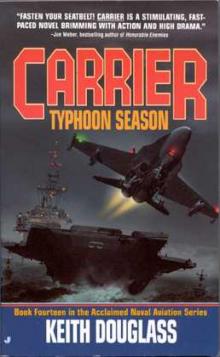 Typhoon Season c-14
Typhoon Season c-14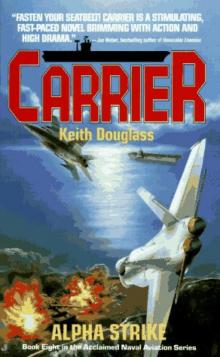 Alpha Strike c-8
Alpha Strike c-8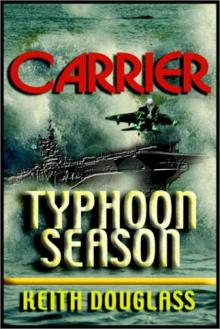 Carrier 14 - TYPHOON SEASON
Carrier 14 - TYPHOON SEASON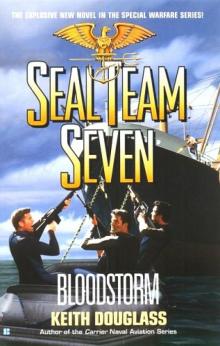 Bloodstorm sts-13
Bloodstorm sts-13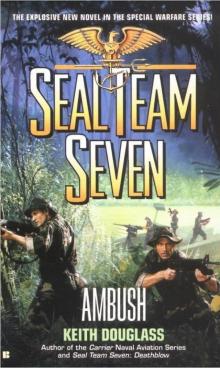 Ambush sts-15
Ambush sts-15 First Strike c-19
First Strike c-19 Flame Out c-4
Flame Out c-4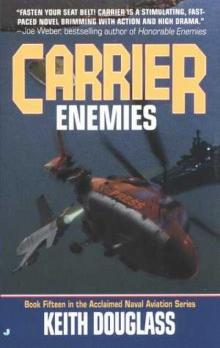 Enemies c-15
Enemies c-15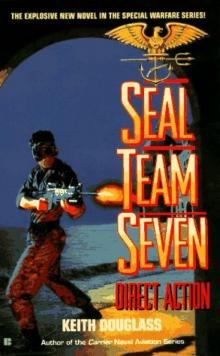 Seal Team Seven 04 - Direct Action
Seal Team Seven 04 - Direct Action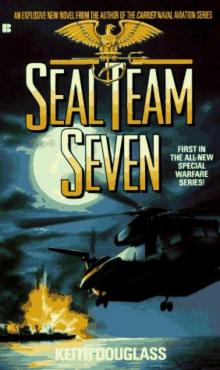 Seal Team Seven 01 - Seal Team Seven
Seal Team Seven 01 - Seal Team Seven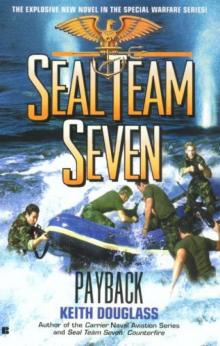 Payback sts-17
Payback sts-17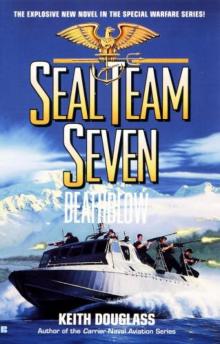 Death Blow sts-14
Death Blow sts-14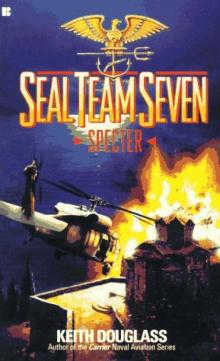 Seal Team Seven 02 - Spector
Seal Team Seven 02 - Spector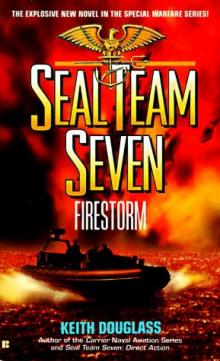 Seal Team Seven 5 - Firestorm
Seal Team Seven 5 - Firestorm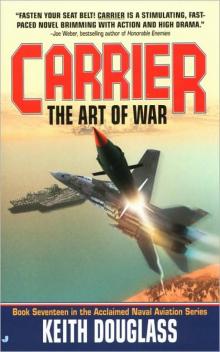 The Art of War c-17
The Art of War c-17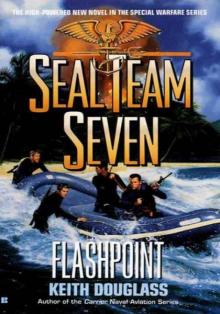 Flashpoint sts-11
Flashpoint sts-11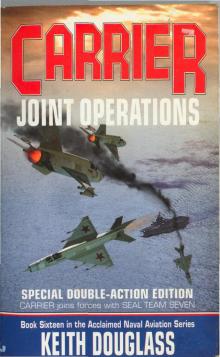 Carrier - Joint Operation Book 16
Carrier - Joint Operation Book 16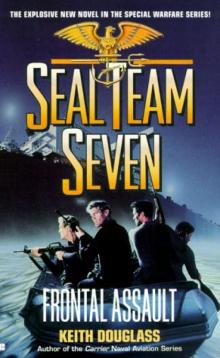 Frontal Assault sts-10
Frontal Assault sts-10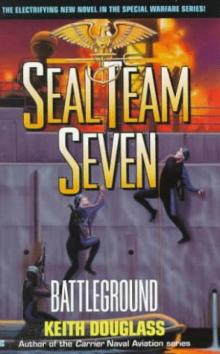 Battleground sts-6
Battleground sts-6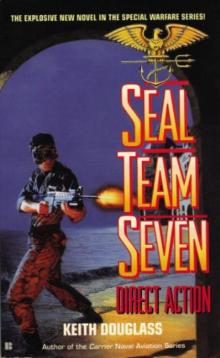 Direct Action sts-4
Direct Action sts-4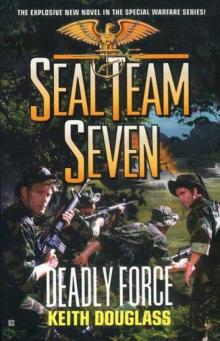 Deadly Force sts-18
Deadly Force sts-18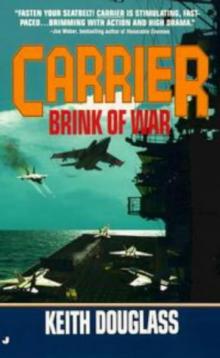 Carrier 13 - Brink of War
Carrier 13 - Brink of War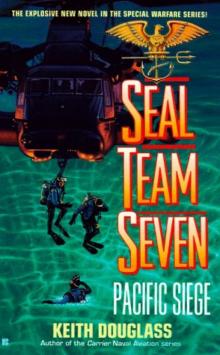 Pacific Siege sts-8
Pacific Siege sts-8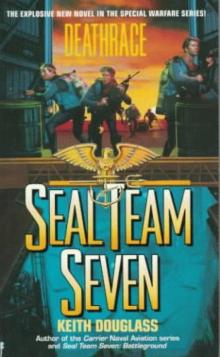 Deathrace sts-7
Deathrace sts-7